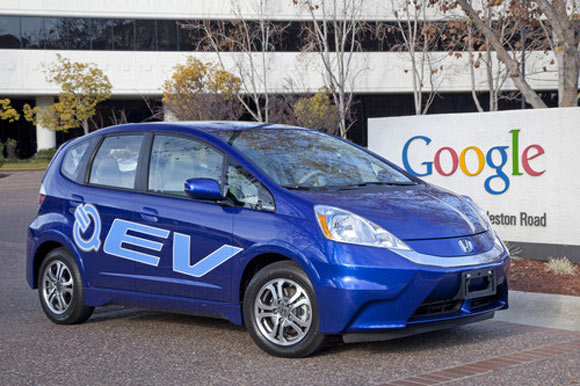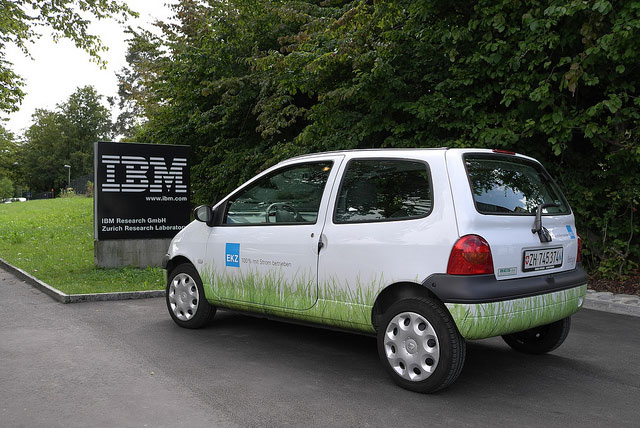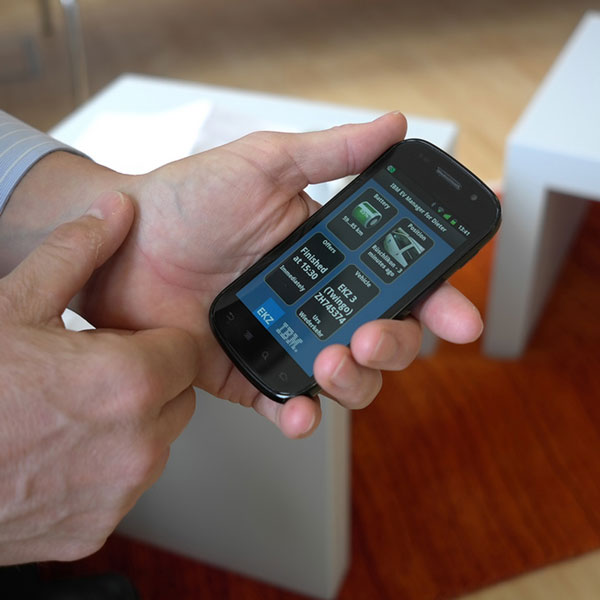Electric Cars to Tell Power Grid When to Charge Them

Owners of electric and hybrid cars just want plug in and charge up without thinking, but growing numbers of such vehicles could overload the aging U.S. power grid. A new project looks to stave off trouble by testing how cars and power grids can "talk" to figure out the best charging schedules.
Such tests would show how Honda's 2013 Fit electric vehicles can delay or adjust charging times based on their own battery state and power grid conditions — all decided within seconds by the vehicles' onboard intelligence. IBM's online cloud computing will help the cars communicate with the U.S. power grid owned by the Pacific Gas and Electric Company, according to an official announcement scheduled for April 12.
"The novel concept is basically taking the vehicle data — such as battery's state of charge — and grid data from PG&E to create an optimal charge schedule for the EV so we aren't taxing the grid or inconveniencing the driver," said Clay Luthy, IBM's global distributed energy resource manager.
Because cars can plug in at different spots, it's very difficult for power companies to predict local loads. And the loads can be considerable: One plug-in car charging at very fast rates can create a grid load equivalent to several houses, Luthy explained. Tomorrow's world will require smart power grids that can handle swarms of plug-in cars reaching almost 3 million vehicles worldwide by 2017, according to a Pike Research report.

Plug and play testing
IBM is working with Honda to ensure that its cloud-based system can talk to the Honda Fit cars for the first phase of upcoming tests. That makes IBM "the brain in the cloud" for this project, Luthy said.
"We're using a small pool of live vehicles driven by real people in a real environment," Luthy, IBM's global distributed energy resource leader, told InnovationNewsDaily. "To support that, we're using simulated data to test out scenarios given larger vehicle counts."
Sign up for the Live Science daily newsletter now
Get the world’s most fascinating discoveries delivered straight to your inbox.
Honda wants to ensure that the new owners of its new plug-in cars have a happy experience charging up. Similarly, PG&E wants to make sure its California grid is ready to serve drivers without interrupting electricity service for homes and businesses.
By updating charging patterns for electric vehicles, "we have the ability, if needed, to shift demand to non-peak times to ensure the reliability of the grid," Saul Zambrano, senior director for consumer products for PG&E, said in a statement.

Staying in control
Drivers won't have to worry about the complicated discussions going on between their cars and the power grid. But IBM wants to make sure drivers can override the "smart charging" choices of the system and retain ultimate control over charging their cars.
"There's times when you'll need to top off the vehicle now, and times when you're planning a long trip," Luthy explained. "That's always taken into account so that it's a seamless experience" for the driver.
IBM declined to disclose exact project timelines or costs at this time. But it did point to several related projects that could make the electric car future more pleasant for everyone.
One IBM project, with Denmark's DONG Energy, aims to balance plug-in car charging with the availability of wind power. Another project, with Switzerland's EKZ, revolves around a mobile app that allows drivers to choose how to charge their cars: immediate top-off; late at night, to pay off-peak-hour prices; or a balanced "set it and forget it" charge managed by the system.
"What that all boils down to is intelligence," Luthy said. "That's IBM's vision for its role in electric vehicle spaces. We think intelligence is needed to make EVs scale within the market."
This story was provided by InnovationNewsDaily, a sister site to Live Science. You can follow InnovationNewsDaily Senior Writer Jeremy Hsu on Twitter @ScienceHsu. Follow InnovationNewsDaily on Twitter @News_Innovation, or on Facebook.











